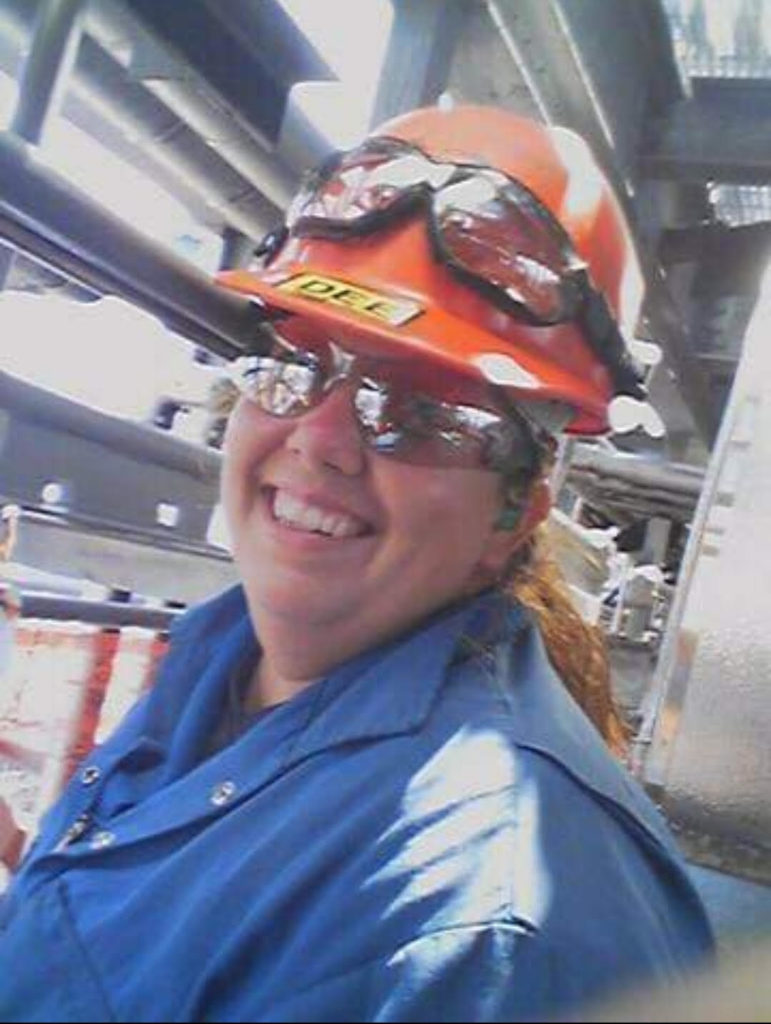Deanna Thomas’ career as a pipefitter for St. Paul Local 455 has taken her to places that she had never imagined — such as the control room of a nuclear power plant.
“It’s a rare experience that I’m very proud of,” Thomas said. “I get to work on or in some of the coolest places that most people just overlook on their drive home.”
Most recently, Thomas worked at the Flint Hills Pine Bend Oil Refinery in Rosemount, Minnesota. The refinery produces most of Minnesota’s transportation fuels, including gasoline, diesel fuel, jet fuel, as well as other products that people rely upon such as propane and asphalt. Flint Hills Pine Bend Oil Refinery employs more than 1,000 people full-time and is considered the largest continuous construction site in the state.

“It’s rewarding to have a career where I can apply my skills to so many different projects,” Thomas said. “Every day is a new challenge and I look forward to going to work.”
New Energy Landscape
In Minnesota, investments have been made to increase energy efficiency in industrial, commercial and residential buildings and to retrofit and upgrade schools and public buildings with resilient, efficient energy infrastructure. Thousands of the state’s union construction workers serve as the reliable workforce for these projects and are preparing the state for an equitable, secure, and affordable energy transition.
“Careers like pipefitting will continue to play a critical role in the state’s energy sector – workers like me build and maintain our state’s energy infrastructure,” Thomas said. “When I drive past a powerplant or refinery, I see a city of complex piping helping to pump out electricity or fuel, which we all depend upon 24/7.”
Whether she’s working at a refinery or in a nuclear power plant, Thomas takes safety very seriously. For example, to work at a nearby nuclear power plant, Thomas undertook additional training given at the plant that would allow her to work in a safe environment with complete confidence.
“Safety is first priority on all of my job sites,” Thomas said. “Working on a power plant, we need to keep everyone safe at their stations during a shutdown or testing process, and there are additional clearance measures that we need to be prepared for before we even start work on a project.”
Thomas added that through a union apprenticeship, pipefitters receive an education and licenses to work with high pressure materials, or chemicals and water specifically.
Through union membership pipefitters can receive additional education to maintain those licenses.
The Minnesota State Building and Construction Trades Council, which represents 15 building and construction unions and more than 70,000 union construction workers, wants Minnesotans to understand the critical link between good-paying union jobs and the energy they use to power their homes and businesses.
“Educated and reliable local union workers are needed to carry out the state’s vision for Minnesota’s energy infrastructure plans,” Thomas said. “When a union provides opportunities for me to build my skills and gain new knowledge, that shows they care about my career and my future.”
Thomas began her career path as an apprentice with St. Paul Local 455 in 2002 and graduated as a journeyworker in 2008. She previously waitressed and traveled before committing to a career in construction for the job security and retirement benefits.
“My only regret is not getting into the trades earlier,” Thomas said. “When I tell people what I do for a living, a lot of people focus mostly on the good pay. What they don’t realize is what a pipefitter really does and the hours of hard work and schooling it took for me to learn those skills, or that my career goes beyond carrying heavy materials. I use a lot of mechanical devices to do my job and we also weld, rig and work at elevated heights or in small, confined spaces.”
Thomas is optimistic about the future of Minnesota’s construction workforce and recommends the apprenticeship experience to young people.
“Perspectives on the trades as being ‘men’s work’ are changing,” Thomas added. “I’m seeing more first-generation workers on site and many more women journeyworkers than when I first started — that’s a positive outlook for Minnesota’s construction future.”